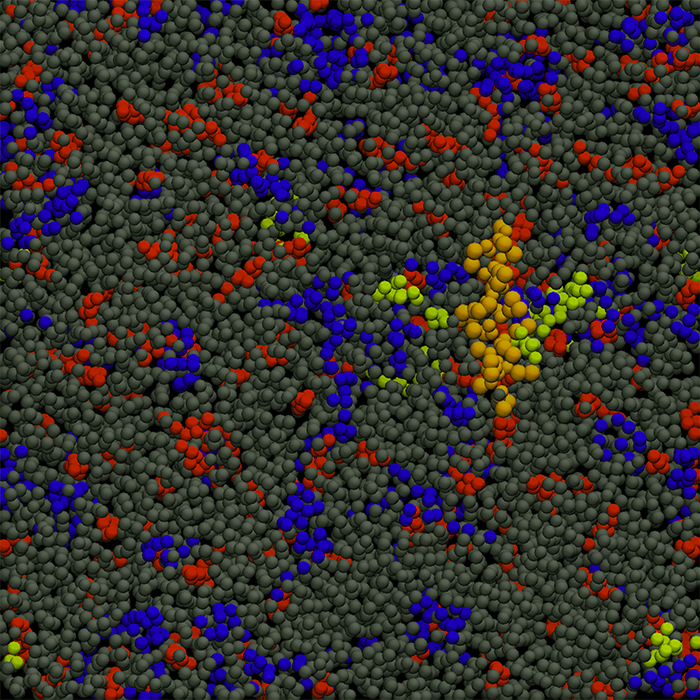Visualising membrane organisation at the atomistic level
A new study by the Stefan lab and colleagues in Molecular Cell uses quantitative cell biological, lipidomics, and biophysical approaches to reveal how nanoscale lipid organisation ultimately controls dynamic global events taking place at the cell membrane.
Abstract from the article:
The plasma membrane (PM) is composed of a complex lipid mixture that forms heterogeneous membrane environments. Yet, how small-scale lipid organization controls physiological events at the PM remains largely unknown. Here, we show that ORP-related Osh lipid exchange proteins are critical for the synthesis of phosphatidylinositol (4,5)-bisphosphate [PI(4,5)P2], a key regulator of dynamic events at the PM. In real-time assays, we find that unsaturated phosphatidylserine (PS) and sterols, both Osh protein ligands, synergistically stimulate phosphatidylinositol 4-phosphate 5-kinase (PIP5K) activity. Biophysical FRET analyses suggest an unconventional co-distribution of unsaturated PS and phosphatidylinositol 4-phosphate (PI4P) species in sterol-containing membrane bilayers. Moreover, using in vivo imaging approaches and molecular dynamics simulations, we show that Osh protein-mediated unsaturated PI4P and PS membrane lipid organization is sensed by the PIP5K specificity loop. Thus, ORP family members create a nanoscale membrane lipid environment that drives PIP5K activity and PI(4,5)P2 synthesis that ultimately controls global PM organization and dynamics.
 Close
Close


